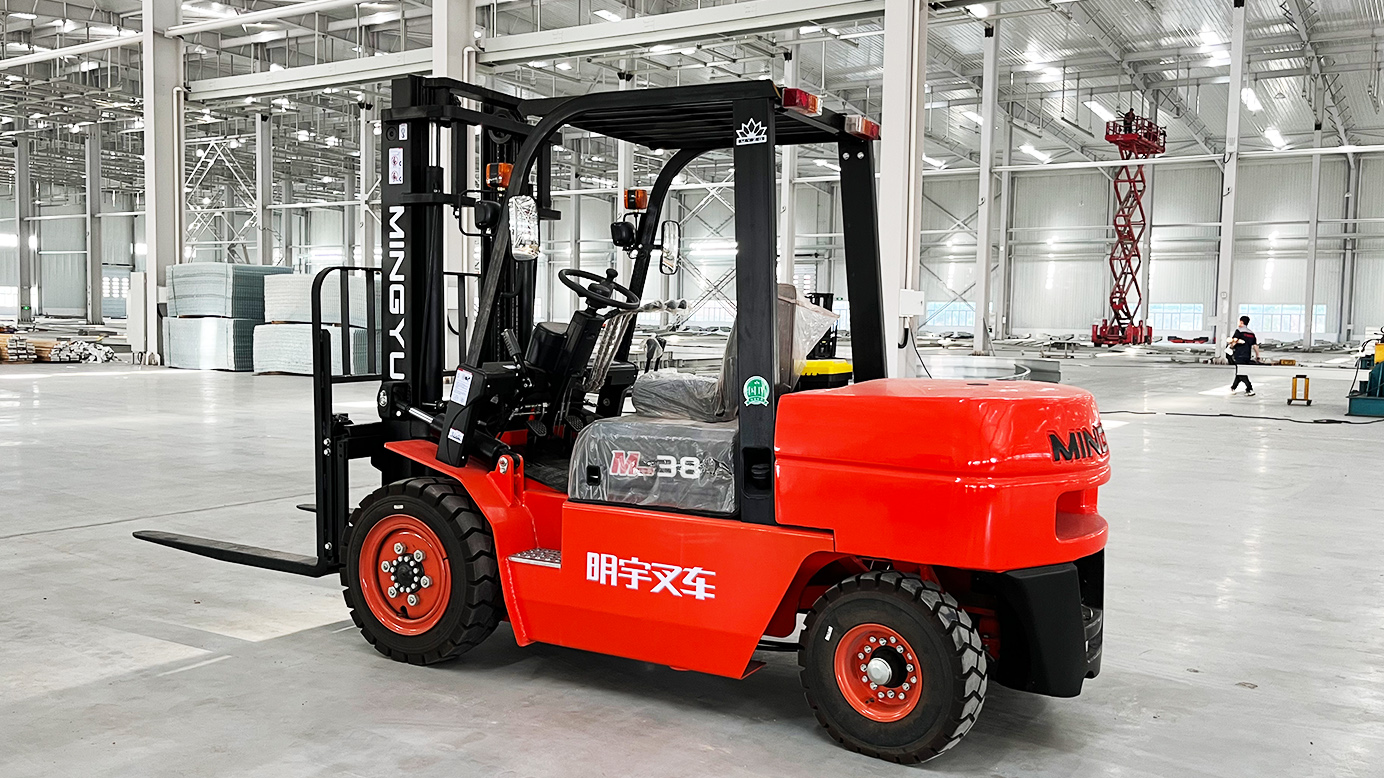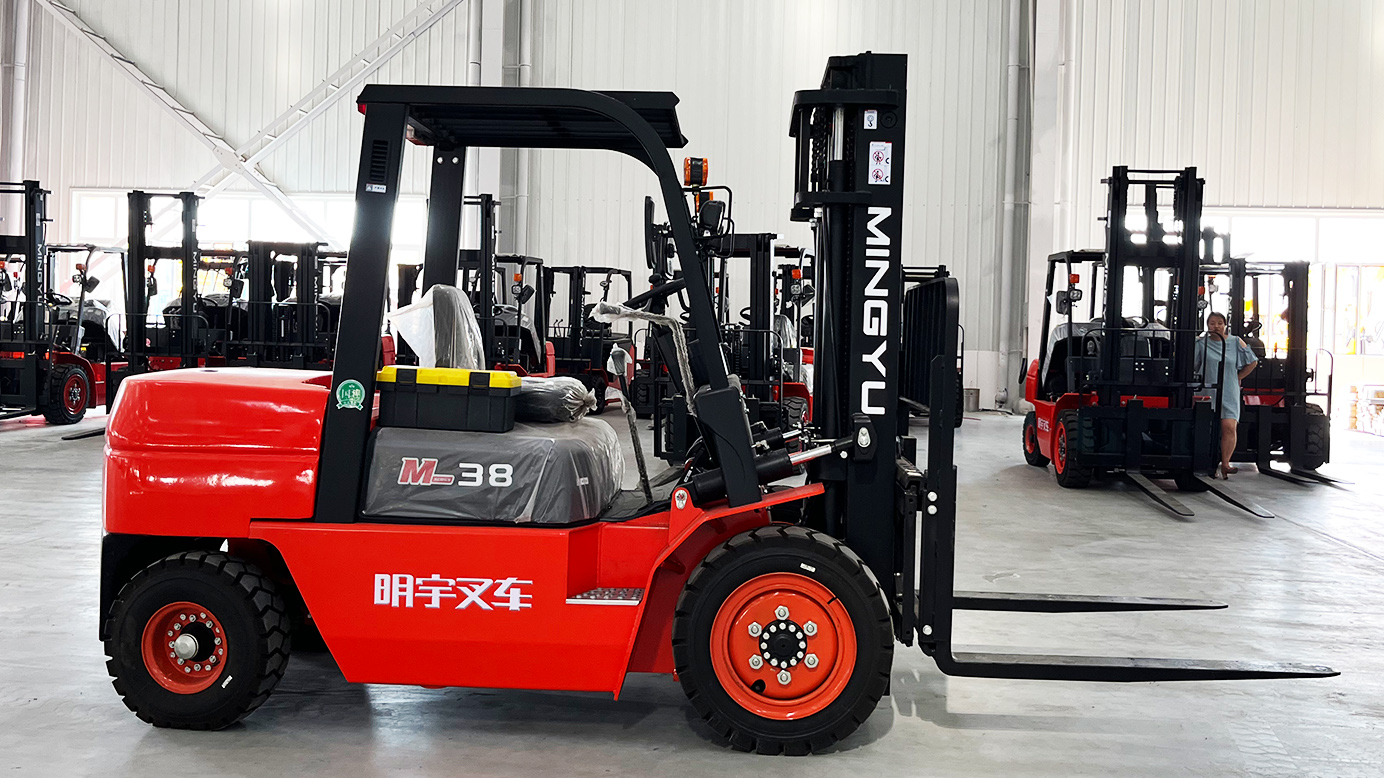I. Introduction
"The roar of a diesel engine, the rhythmic lift of heavy loads – these are the hallmarks of forklift operations. While essential for many industries, diesel forklifts also present significant safety challenges. Exhaust fumes, fire hazards, and the risk of collisions can all lead to serious injuries or even fatalities. To ensure a safe working environment, a comprehensive understanding and strict adherence to safety regulations are paramount. This article will delve into the specific safety regulations for operating diesel forklifts, both indoors and outdoors, covering crucial aspects like ventilation, fire prevention, and operator training. By understanding and implementing these guidelines, businesses can minimize risks, protect their workforce, and maintain a safe and productive work environment."
II. Understanding Diesel Forklift Hazards

Diesel forklifts, while powerful and efficient, pose several inherent hazards. Exhaust emissions, including carbon monoxide (CO), nitrogen oxides (NOx), and particulate matter, can contaminate the air, posing a serious health risk to operators and nearby personnel. Fire and explosion risks are ever-present, stemming from fuel leaks, hot surfaces, and the potential for sparks to ignite flammable materials. Tip-over hazards are significant, particularly when operating on uneven surfaces, overloading the forklift, or making sharp turns at high speeds. Collisions with pedestrians, equipment, and structures are a major concern, often resulting from blind spots, narrow aisles, and inadequate visibility. Finally, noise pollution and vibration can contribute to operator fatigue and long-term health issues.
III. Indoor Safety Regulations
Operating diesel forklifts indoors necessitates strict adherence to ventilation regulations. OSHA standards mandate safe exposure limits for CO, and local building codes often have specific requirements for ventilation systems. Adequate air exchange is crucial to prevent the buildup of harmful fumes. Fire safety measures are paramount. Fire extinguishers and, in some cases, automatic suppression systems must be readily available. Proper fuel storage and handling procedures, including secure containment and spill prevention, are essential. Clearly marked aisles and designated pedestrian walkways are vital to prevent collisions. Regular maintenance and inspections are mandatory. This includes checking for fuel leaks, hydraulic fluid leaks, and exhaust system integrity. Battery maintenance, if applicable for electric start models, is also crucial. Operator training and certification are non-negotiable. OSHA requires all forklift operators to undergo comprehensive training, including specific instruction on safe operation in indoor environments.
IV. Outdoor Safety Regulations
Operating diesel forklifts outdoors presents a unique set of challenges. Terrain and surface conditions must be carefully assessed. Uneven ground, slopes, and inclement weather conditions like rain, snow, and ice can significantly increase the risk of accidents. Visibility and signaling are crucial. Adequate lighting, reflectors, and the use of hand signals are essential for effective communication and to avoid collisions. Load stability is paramount. Loads must be properly secured and evenly distributed to prevent shifting during transport. Operating speeds should be adjusted to account for wind conditions and terrain variations. Environmental regulations must be strictly adhered to. Spill prevention and containment measures are essential to protect the environment from fuel leaks and hydraulic fluid spills. Noise pollution control measures may be necessary in certain areas. Operator training for outdoor conditions is crucial, covering topics such as safe operation on inclines, dealing with adverse weather, and emergency procedures for outdoor hazards.
V. General Safety Practices for Diesel Forklifts
Regardless of the operating environment, adherence to general safety practices is critical. Pre-operation inspections are mandatory, including checking fluid levels, tire pressure, and the functionality of lights, brakes, and steering. Safe operating procedures must be strictly followed. This includes maintaining safe speeds, avoiding sudden maneuvers, and properly lifting and lowering loads. Overloading the forklift should be strictly avoided. Personal protective equipment (PPE) is essential, including safety shoes, high-visibility vests, and safety glasses. Hearing protection is recommended to mitigate the effects of noise pollution. Emergency response protocols must be established and regularly reviewed. This includes procedures for first aid, spill response, and evacuation in case of accidents.
VI. Technology and Safety Enhancements
Technological advancements are continuously improving forklift safety. GPS and telematics systems enable fleet management, allowing supervisors to monitor forklift locations and operating parameters. Collision avoidance systems, equipped with sensors and cameras, can detect and alert operators to potential collisions with pedestrians or obstacles. Improved ventilation and exhaust systems minimize exposure to harmful fumes. Ergonomic designs and operator comfort features enhance operator safety and reduce fatigue.
VII. Conclusion
Operating diesel forklifts safely requires a multifaceted approach. By understanding and adhering to the safety regulations outlined in this article, including those related to ventilation, fire prevention, and operator training, businesses can significantly reduce the risk of accidents. Continuous training, regular inspections, and the implementation of safety enhancements are essential for maintaining a safe and productive work environment. Ultimately, a commitment to safety is not just a legal requirement but a fundamental aspect of responsible and ethical business practices.
Post time:Mar.28.2025


